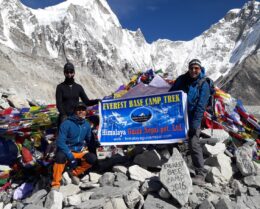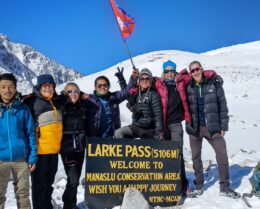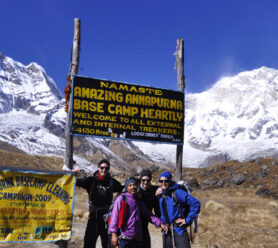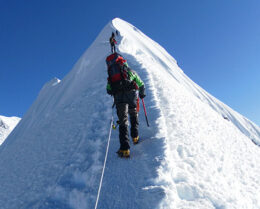Best Time for Annapurna Circuit Trek
UPDATED ON 2 March, 2023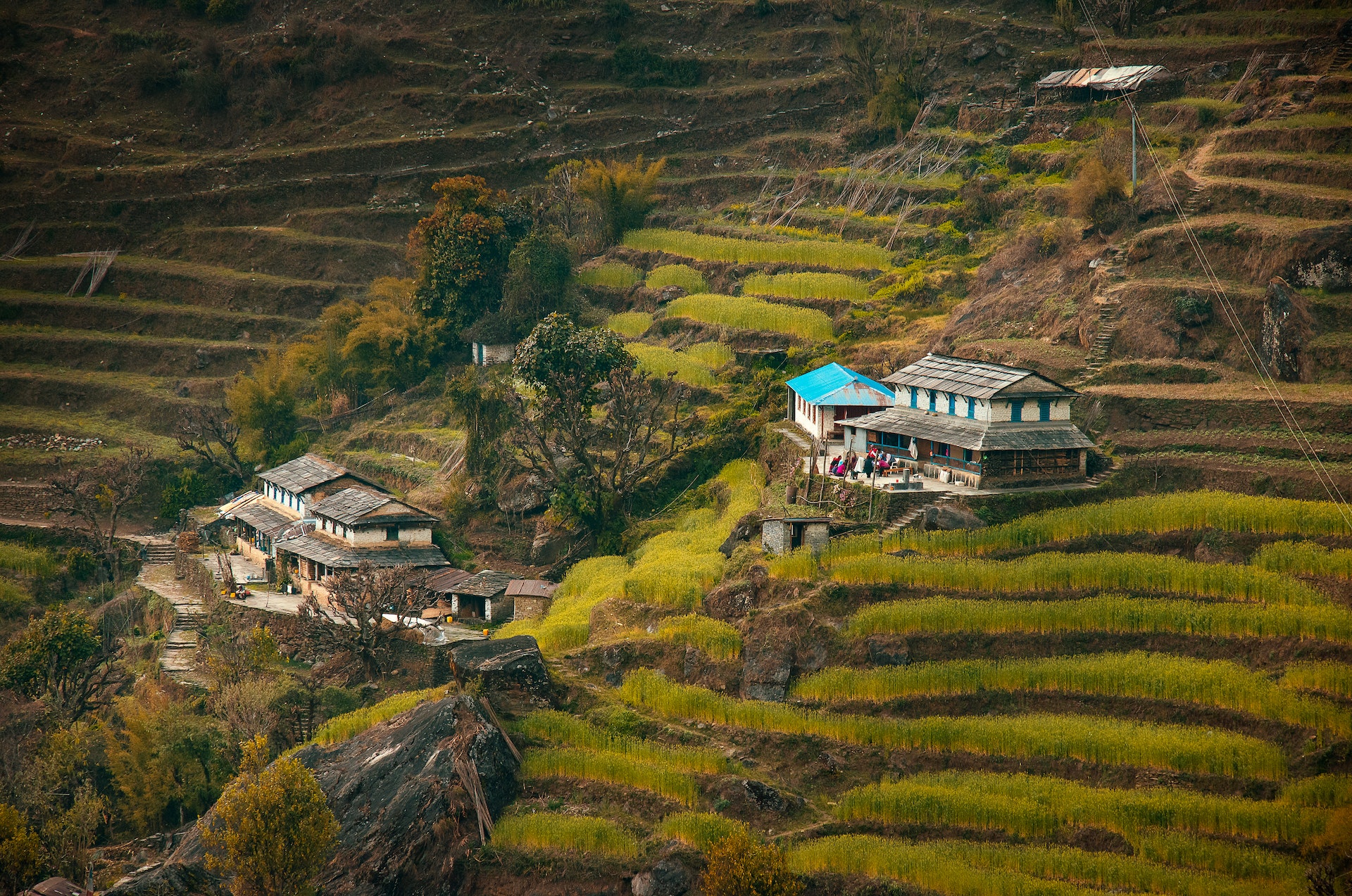
The Annapurna Circuit Trek is a highly sought after trekking route known for its picturesque mountain views, varied landscapes and cultural experiences. However, the timing of your trek is crucial to ensure a successful and enjoyable experience.
The best time to embark on the Annapurna Circuit is during the autumn months of September to November. This time of year offers clear skies, good weather and the added bonus of the rhododendron forests in full bloom.
On the other hand, the monsoon season from June to August is not a suitable time to trek the Annapurna Circuit due to the potential of landslides and muddy slippery trails caused by heavy rainfall. The poor visibility during this season can also impede views of the mountains.
Importance of Timing for Annapurna Circuit Trek
It is also important to consider the timing of your trek in relation to the peak climbing season for Annapurna and Thorong La pass. This period from September to November sees an influx of trekkers and climbers on the routes and can make for crowded trails and fully booked lodges. To avoid this, it is recommended to schedule your trek outside of this period.
As the Annapurna Circuit trek is a high-altitude trek, it is important to take into account the potential for altitude sickness. Adequate time should be given to acclimatize before attempting the Thorong La pass, the highest point on the trek at 5,416 meters.
In conclusion, timing is critical for a successful and enjoyable Annapurna Circuit Trek. The autumn season offers the best conditions, while the monsoon season and peak climbing season should be avoided. Adequate time should also be given for acclimatization before attempting the Thorong La pass.
Factors to Consider when Choosing the Best Time for Annapurna Circuit Trek
One of the most well-known trekking routes in the world, the Annapurna Circuit Trek is renowned for its breathtaking mountain views, varied landscapes, and cultural encounters. But because there are so many things to take into account, picking the ideal time to hike the Annapurna Circuit can be challenging.
The weather should be taken into consideration first. The autumn season, which lasts from September through November, is the ideal time to hike the Annapurna Circuit. The time is ideal for hiking and taking pictures because the skies are clear and the weather is calm. The rhododendron woodlands are also in full bloom throughout the autumn season, providing a burst of color to the hike.
On the other hand, the monsoon season, which runs from June to August, is not a good time to trek the Annapurna Circuit. The heavy rainfall can cause landslides and make the trails muddy and slippery, making the trek treacherous and uncomfortable. Additionally, visibility is poor during the monsoon season, which can spoil the views of the mountains.
Best time for the Annapurna Trek
Another factor to consider is the timing of your trek in relation to the peak climbing season. The peak climbing season for Annapurna and Thorong La pass is from September to November, during this time, the routes are crowded and the lodges are full. If you don’t want to share the trail with a lot of other trekkers and climbers, it’s best to avoid this time period.
The degree of physical fitness needed for the walk is the next aspect to take into account. Because it is at a high altitude, the Annapurna Circuit trip calls for reasonable physical fitness. Pick a time when you have adequate time to physically prepare yourself if you are not in the ideal form.
The Annapurna Circuit Journey is a high-altitude trek, thus it’s necessary to be aware that altitude sickness could be a problem. Before trying the Thorong La pass, which rises to a height of 5,416 meters and is the highest point on the trek, it’s crucial to allow oneself enough time to thoroughly acclimatize.
Seasons and Weather on Annapurna Circuit Trek
A well-liked hiking route in Nepal, the Annapurna Circuit Trek is renowned for its breathtaking mountain views, varied landscapes, and cultural encounters. However, the walk can be impacted by the weather and the seasons, so picking the proper time to trek is crucial.
The Annapurna Circuit is an excellent walk to take during the spring, which lasts from March through May. The warm temperatures and beautiful skies make for the best hiking and photographic settings. The walk is further brightened by a splash of color during the spring, when the rhododendron forests are in full flower. This time of year is perfect for the trek because the temperatures are temperate.
The Annapurna Circuit can be hiked throughout the fall months of September through November. The beautiful skies and clear weather make for the best hiking and shooting possibilities. The rhododendron woodlands are also in full bloom throughout the autumn season, providing a burst of color to the hike. This time of year is perfect for the trek because the temperatures are temperate.
On the other side, the Annapurna Circuit should not be hiked during the monsoon season, which lasts from June to August. The trip can be dangerous and uncomfortable due to the heavy rainfall’s potential to produce landslides and make the routes muddy and slippery. The rainy season also has poor visibility, which can obstruct views of the mountains. In terms of the weather, it is not the ideal time to go hiking.
The Annapurna Circuit should not be hiked during the winter season, which lasts from December to February. The journey can become challenging and uncomfortable when the temperature drops drastically. Furthermore, poor visibility during the winter months might obstruct views of the mountains.
Peak Seasons and Crowds on Annapurna Circuit Trek
One of the most well-liked treks in Nepal, the Annapurna Circuit attracts thousands of trekkers each year. Hikers pass through a range of environments on the route, including lush forests, craggy mountains, and old-world villages. The Annapurna Circuit trek is popular, therefore it’s vital to take into account the high seasons and crowds that may affect your trekking experience.
Peak Seasons
September to November and March to May are often the busiest months for the Annapurna Circuit trek. These are the seasons of the year with the clearest skies and most comfortable temperatures for trekking. Hikers may anticipate the greatest views of the surrounding mountains, particularly the Annapurna range, throughout these months.
But the busiest times of the year for the journey are also during the peak seasons. The trails sometimes fill up with hikers, making it challenging to locate a peaceful place to take in the scenery or take a break. Additionally, during peak seasons, there may be a strong demand for lodging and other trekking services, which could result in higher costs and a shortage of supply.
Crowds
The Annapurna Circuit trek is a well-liked location for hikers of all experience levels, and the trail can get congested during the busy seasons. Finding a peaceful location to enjoy the sights or take a rest may be challenging as a result. The surrounding ecology and resources may also be strained as a result of the trail’s increasing foot traffic.
Consider going on a hike from December to February or from June to August to avoid the crowds. The trails will be less crowded at these periods, even though the weather may be less favorable with more rain and cooler temperatures. In addition, lodging and other trekking services will be more affordable and accessible.
Off-Season Treks on Annapurna Circuit: Pros and Cons
For hikers, trekking the Annapurna Circuit out of season can be a memorable and gratifying experience. Off-season treks often occur from December through February or from June through August. There are a number of benefits and drawbacks to take into account while planning an off-season excursion, even though the weather may not be as good as peak season during these months.
Pros:
- Less crowded: The trail is less busy in the off-season, which can make for a more tranquil and lonely experience. Without the throngs of peak season, hikers will be able to take in the breathtaking views and unspoiled beauty of the Annapurna Circuit.
- Affordability: During the off-season, lodging and other trekking services will be more readily accessible and less expensive. This can lower the cost of the walk for hikers on a tight budget.
- Unique Experience: Trekking in the off-season can offer a distinctive experience that is different from trekking in the busy season. Hikers will be able to view the Annapurna Circuit in a fresh way because of the altered sceneries and climate.
Cons:
- Off-season weather can be less hospitable than peak season weather, with more rain and cooler temperatures. Hikers should pack in accordance with the potential of severe weather.
- Limited Services: During the off-season, some trekking services can be unavailable or closed. This may make it more challenging to secure lodging or engage a guide.
- Landslide Risk: Trekkers may encounter landslides during the monsoon season (June-August), which can render the trail hazardous and temporarily close.
In general, hiking the Annapurna Circuit in the off-season can be a rewarding and distinctive experience for hikers, but it’s vital to be ready for any potential drawbacks, such as bad weather and fewer facilities. It’s crucial to plan ahead and do your research if you’re thinking about going on a trek outside of the main travel season.
How to Plan the Perfect Annapurna Circuit Trek Timing
Planning the perfect timing for an Annapurna Circuit trek is essential for making the most of your experience. Here are some tips for planning the timing of your trek:
Consider the weather:
The best time to trek the Annapurna Circuit is during the peak seasons of September to November and March to May. These months offer the perfect weather for trekking and climbing, with clear skies and mild temperatures. However, if you’re looking to avoid the crowds, consider trekking during the off-season, which is December to February, or June to August.
Plan your itinerary:
The peak seasons of September to November and March to May are the ideal times to hike the Annapurna Circuit. The ideal weather for trekking is found during these months, with clear skies and comfortable temperatures. However, if you want to avoid the crowds, think about going on a hike from December to February or from June to August.
Check for trail closures:
Check for any trail closures resulting from maintenance or other reasons before you start your hike. Landslides can also happen during the monsoon season (June to August), which could temporarily stop the trail.
Book your accommodation and services:
During peak seasons, accommodation and other trekking services can be in high demand, which can lead to higher prices and a lack of availability. Make sure to book your accommodation and services well in advance, to ensure that you have a place to stay and the necessary resources for your trek.
Be flexible:
Finally, be prepared to be flexible with your plans. Weather conditions can change quickly, and trail closures can occur unexpectedly. Be prepared to adjust your itinerarFy as necessary, and make sure to have a backup plan in case of unforeseen circumstances.
By considering these factors and planning accordingly, you can ensure that your Annapurna Circuit trek is timed perfectly for the best possible experience.
Frequently asked questions
Tips for Making the Most of Your Annapurna Circuit Trek Experience
The Annapurna Circuit trip is a fantastic adventure that gives trekkers the chance to experience some of the most breathtaking scenery on earth. To maximize your trek, consider the following advice:
Hire a guide:
Your hiking experience might be substantially improved by hiring a guide. You can get useful knowledge about the local culture and history of the area from a guide in addition to their assistance with trail navigation.
Pack wisely:
Make sure to pack appropriately for the weather and trail conditions. Bring warm clothes, waterproof gear, and a good pair of hiking boots. Make sure to also pack enough food and water, as well as a first aid kit.
Acclimatize:
Make careful to pack sensibly for the path and the weather. A sturdy set of hiking boots, warm clothing, and waterproof gear are all recommended. Don’t forget to include adequate food, drink, and a first aid kit in your luggage..
Be respectful of the local culture:
The Annapurna Circuit trek passes through many traditional villages, and it’s important to be respectful of the local culture. Dress modestly and be mindful of your actions and words.
Take time to appreciate the scenery:
The Annapurna Circuit trip travels through a number of traditional villages, therefore it’s crucial to respect the native way of life. Be aware of your words and deeds, and dress modestly.
Be prepared for unexpected events:
Make sure to be ready for everything because the weather in the Himalayas can change suddenly and drastically. You should be ready for unforeseen occurrences like landslides, snowfall, and other natural disasters.
By following these tips, you can make the most of your Annapurna Circuit trek experience and ensure will be unforgettable. .
How to Get the Best Deals on Annapurna Circuit Trek permits and gear
The Annapurna Circuit trek is a well-liked hiking destination, but the expense of permits and equipment may add up quickly. Here are some suggestions for finding the cheapest prices on trek permits and equipment:
Get the greatest savings on permits and equipment by planning in advance. You are more likely to get a better deal the earlier you book.
Don’t be scared to shop around to find the best deals on licenses and equipment. Utilize deals and discounts by comparing pricing from several merchants.
Invest in old equipment: Used equipment can help you save a lot of money. Look for equipment that has been well-maintained and is still in good condition.
Rent equipment: Renting equipment is another approach to cutting costs. Renting equipment allows you to test out several brands and types before making a purchase and is frequently less expensive than buying it.
The Permits for ABC Trek
Obtain an ACAP permit and TIMS card simultaneously: The Annapurna Circuit climb requires both the TIMS card (for the trekker’s information management system) and the ACAP permit (for the Annapurna Conservation Area permit). Everything will be less expensive for you to purchase it all at once rather than separately.
Book through a local company: Booking through a local company might help you receive the greatest prices on licenses and equipment. Compared to larger, multinational companies, local agencies frequently have access to better prices and offers.
Off-season journeys are usually undertaken between the months of June and August or December to February. The path is less popular and equipment and permit costs are frequently lower during these months.
You may save the most money on permits and equipment for your walk along the Annapurna Circuit by using the advice in this article.
How to find the right guide and porter for Annapurna Circuit Trek
A safe and pleasurable walk through the Annapurna Circuit depends on selecting the correct guide and porter. The following advice will help you choose the best guide and porter for your trek:
Finding the best guide and porter services for your walk requires extensive research into various services. Compare costs and services, then look for reviews and endorsements from prior customers. You can also inquire about licensed and qualified guides and porters with the trekking agencies association of Nepal (TAAN).
Verify qualifications:
Verify that your guide and porter are qualified, have the required training, and are certified. An excellent guide should have expertise guiding hikes in the Annapurna area and should be conversant in the local way of life. They ought to be proficient in English and well-versed in safety, the trail, and the weather.
Find a reliable company:
Seek out a company that is well-known and has a solid reputation. These organizations will frequently have knowledgeable porters and guides, and they’ll be able to arrange for all the gear and permissions you’ll need for your trek. Verify if the organization is legitimate and registered.
Think about your needs:
When searching for a guide and porter, keep in mind your unique requirements. For instance, make sure the guide and porter you select can suit your demands if you’re going with kids or have special equipment requirements.
Communicate:
Be sure to let your guide and porter know what you need and expect from them. This might make the encounter more enjoyable by ensuring that they are aware of your hiking objectives.
Verify your insurance:
Make that your porter and guide are covered by the appropriate insurance, which will pay for any emergency medical costs.
By using these suggestions, you may choose the best guide and porter for your walk along the Annapurna Circuit and make sure that it is both safe and fun. To ensure a safe and successful journey, it’s crucial to conduct your homework and select a guide and porter that fit your needs and has the required training and experience.
How to prepare yourself physically and mentally for Annapurna Circuit Trek
Exercises including hiking, running, cycling, and weightlifting are frequently combined with cardio and strength training exercises as part of the physical preparation for the Annapurna Circuit Trek. As your trek draws near, it’s also crucial to work on developing endurance by progressively boosting the length and intensity of your workouts.
Setting reasonable goals and being mentally ready for the difficulties of high-altitude trekking, including altitude sickness, chilly weather, and difficult terrain, are crucial. Additionally, it’s a good idea to familiarize yourself with the traditions and culture of the area you’ll be traveling to as well as to practice stress-reduction and mindfulness techniques to keep yourself composed and focused while on the walk.

